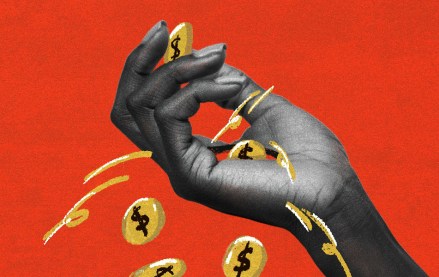Marketing Briefing: As the Google antitrust trial wraps, marketers weigh future of paid search ad spend

This Marketing Briefing covers the latest in marketing for Digiday+ members and is distributed over email every Tuesday at 10 a.m. ET. More from the series →
As the Google antitrust case comes to a close — lawyers for both Google and the Department of Justice made their closing arguments last week and now await a verdict — there’s a spotlight on Google Search and paid search advertising in general.
The impact on paid search may be unclear, but marketers and agency execs believe that regardless of the outcome of the case the future of search will be a more fragment and that brands will have to adapt as they follow shifting consumer search trends.
“The biggest impact on the future of search will be advertisers having to learn about — and become experts in — platforms outside of Google,” said Mark Himmelsbach, founding partner at brand experience agency Episode Four, adding that younger consumers’ use of platforms like TikTok, Reddit and Snapchat for search will continue to push marketers to diversify.
While marketers haven’t been too concerned about the trial and its potential outcome — that’s according to agency execs who say that they’ve heard very little from clients about it — there is a sense that marketers are paying more attention to their paid search efforts this year. That increased attention is coming in the form of hiked spending and more consideration of test budgets across various non-Google platforms, according to agency execs.
There are a few reasons for this. For some clients, organic search traffic has declined this year (given changes in search like the burgeoning use of generative AI) and they’re investing more in paid advertising to make up for those declines. Other marketers are making a bigger push into e-commerce efforts looking to drive consumers to their own sites more than ever so they’ve opted to invest more in paid search this year to drive that traffic as well as navigate those challenges. Investment in the sector varies by client and agency.
“We’re seeing some surprising falloffs on direct traffic or traffic from organic search,” said Jeremy Whitt, executive media director at Hanson Dodge. “So we’ve had to rely more on paid.” When asked for a rough estimate of the increase in spend for clients, Whitt posited that if search spending was 20% for a client last year it’s likely closer to 25% to 30% of that client’s budget this year.
The focus on paid search isn’t just in terms of increased ad spending. Agency execs are recommending elevated test budgets for search to diversify ad spending. Some execs are suggesting clients try out platforms that may have underperformed in the past but have made improvements and showed promising results; one example of this would be Microsoft’s Bing which has “upped their game,” with an expanded network and placements that are promising, according to Valerie Schlosser, group connections director of paid search, VML.
Others execs believe there’s been so much fragmentation in search and that it should now be seen less as a platform-specific media channel and more as a consumer behavior function that brands need to follow and adapt to across platforms. The growth of search on platforms like TikTok (even with TikTok’s questionable future) and Reddit, among others, means that marketers need to test out search budgets there too.
“There’s tons of appetite to test,” said Jon Morgenstern, head of investment at VaynerMedia, noting that clients are earmarking budget for tests but that doesn’t come at the expense of Google Search.
When it comes to testing newer channels for search, TikTok has been a primary interest for marketers, but the ban may change that.
“While I think the Google trial is not causing a lot of worry in the advertising world, I do think the fate of TikTok is going to have a lot more to do with the future of search,” said Steven Frey, director of integrated media planning at Media by Mother. “With younger generations becoming more and more weary of Google, there will inevitably be new pathways [through] which people seek information. Reddit has become one variation of this, TikTok has also begun to enter the conversation in search behavior on the web.”
Frey continued: “Now, with TikTok’s future unclear, the future of search has become a lot murkier. Will Google be able to keep its platform relevant and trusted? Or will people find better alternatives as Google continues to monetize as much of the search process as they can?”
3 Questions with Candii Woodson-Witchard, director of media strategy at Cricket Wireless
The marketing landscape is very different this year than last year. How have you adapted as a brand?
We try to balance things across the marketing funnel. Some folks sometimes can get into the place where they’re so heavily focused on lower funnel, but they’re not feeding the top. We try to make sure we have a balance between that brand and that performance marketing. We’ve actually been doing that for a while now. We saw the tides turning a little bit earlier, and we’ve been slowly, gradually focusing on that. Again, it’s not one of those things you set and forget. What you had in balance before might shift and change. So we’re constantly keeping an eye on what that looks like and what makes sense for us.
It took a while, but Google’s third-party cookie deprecation now impacts at least one percent of Chrome browsers. What plan of action is in place for Cricket given those changes?
Everybody’s searching for the million dollar answer to serve us all. I don’t want to give away all of our secret sauce, but what I will say is we’ve been preparing for this for a while. We’ve been testing out other ways to go about targeting so we can fortify our campaigns. We’ve been looking at different opportunities for us to fortify how we measure our campaigns. When you’re deprecating cookies, it doesn’t just impact how you target and your reach, it also impacts how you’re effectively being able to measure you campaign as well. The other thing is partnering with Google and partners on what things we can do to help better prepare ourselves for that future.
What does your display strategy look like?
We already have looked at how we should properly measure display because not only is it a place where a lot of the targeting happens, but also it’s the role that it plays in the consumer journey. Typically, when you’re in the display channel, you’re not necessarily pro-actively ready to do a purchase. You have to evaluate and value that particular channel based on how consumers utilize it. That’s ultimately important. Outside of some of the cookie-based targeting, there’s other targeting. We might have to go back and revisit some of those [traditional targeting tactics] and see how we can leverage some of the homegrown things of the past, but also continue to invest in the channel in other ways too. It might not necessarily be something that drives your lower funnel results, but it might be something that has a place in your middle to upper funnel goals.
The approach is different, how you measure it will be different because it’s still very much part of the consumer’s journey. Eliminating it, you’ll ultimately miss out on reaching and connecting with consumers as they are going down their purchase path. — Kimeko McCoy
By the numbers
The role of the CMO has changed to say the least. Economic pressures have caused marketers to do more with less. Meanwhile, expectations of what marketing pros should deliver continue to rise. In fact, CMOs continue to take on broader responsibilities in their roles, overseeing marketing and things like communications, according to a new study from Spencer Stuart consulting firm. See more details from the report below:
- When companies looked outside for CMOs, they increasingly were willing to consider candidates from beyond their industry. 43% of externally recruited Fortune 500 CMOs in 2023 came from a different business sector, vs. 37% in 2022.
- Women achieved parity with men in 2023, representing half of all Fortune 500 CMOs — an increase from 47% in 2022.
- However, there was a slight drop in the representation of CMOs from historically underrepresented racial and ethnic groups, from 14% in 2022 to 12% in 2023. — Kimeko McCoy
Quote of the week
“I’ve always found pharma, as an industry, to be a couple steps behind … it’s getting in lockstep with [consumer brands], as we get braver and braver clients.”
— Klick Health executive creative director Tim Jones when asked about how pharma brands are starting to embrace influencer marketing now.
What we’ve covered
- WTF are data collaborations?
- How CTV platforms are pushing non-traditional ad formats — but not too far
- Digiday+ Research: Influencers see more Instagram engagement with still images than Reels
More in Marketing

As the line between B2B and B2C marketing blurs, Workday taps humor in consumer-facing media channels
As the crowded digital landscape challenges marketers to stand out, B2B company Workday tests a B2C marketing strategy.

How the NBA’s broadcast rights tussle could affect advertisers
Streaming could change the NBA advertising landscape, say media experts.

Ad tech vendor Colossus faces scrutiny for alleged mismanaging IDs
Concerns stem from a report by ad transparency startup Adalytics, which discovered that Colossus was mislabeling IDs, leading to unintended ad purchases.







